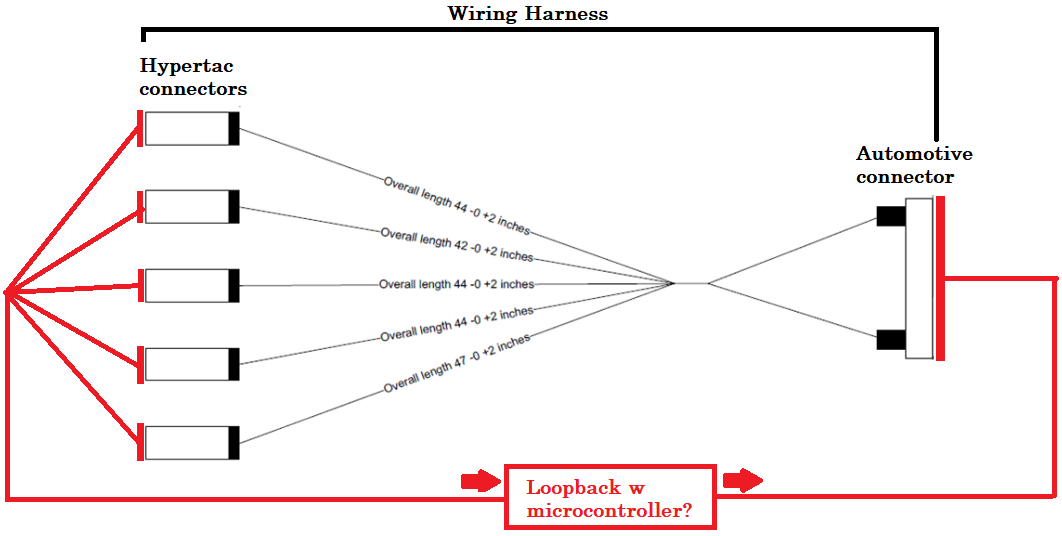I have some dozens of wiring harness, and always buying more. Nowadays I need to test connection by connection through continuity test with a multimeter and checking on the documentation in order to verify if each harness were build correctly. I definitely need to find a way to make it automatically. That's why am here... Please bring me ideas how I should design a circuit to accomplish that.
A few considerations:
- Each harness can have between 40-200 connections.
- Each harness has one automotive connector at one end, and a few hypertac connectors at the other end.
- At one end, each harness has only one automotive connector w to 200 pins each (rarely fully used)
- At the other end, each harness has a few hypertac connectors w 90 pins each (sometimes fully used)
- I do not have many resources, that means the solution should as cheap as possible.
Doing this manually, I check on the mapping doc then I test continuity b/w the two pins, but to do it automatically the hardware must have to test each pin at one end w all pins at the other end. I think it should be like a switchable loopback between several pins.
Comes in my mind to using 90+200 = 290 relays and control them w I2C, but it does not look a good nor elegant idea to have this rude amount of relays operating.

